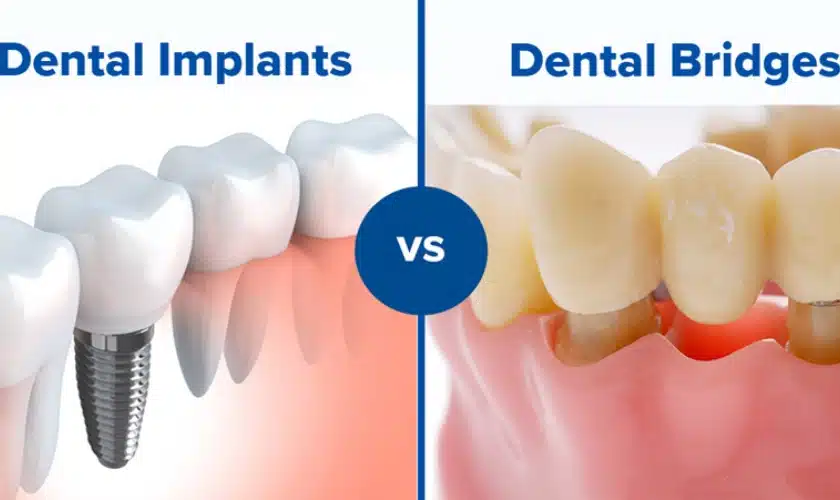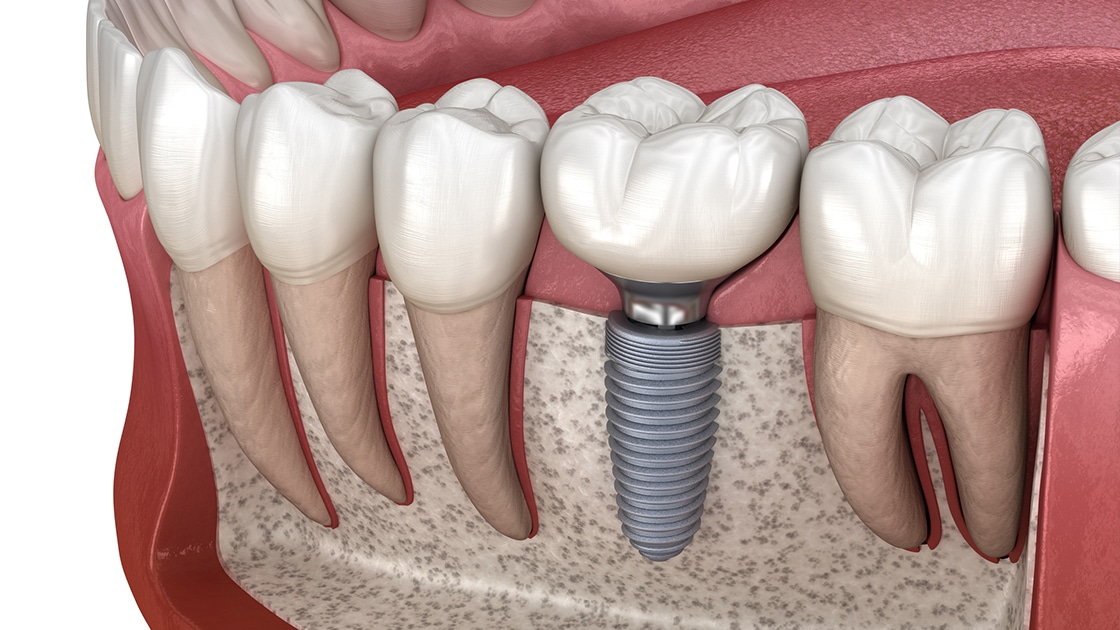The Main Principles Of Dental Sense
Table of Contents4 Simple Techniques For Dental SenseIndicators on Dental Sense You Need To KnowHow Dental Sense can Save You Time, Stress, and Money.An Unbiased View of Dental Sense
are medical tools surgically implanted right into the jaw to bring back an individual's capacity to chew or their appearance. They offer support for synthetic (phony) teeth, such as crowns, bridges, or dentures. When a tooth is shed as a result of injury or condition, a person can experience difficulties such as quick bone loss, faulty speech, or modifications to eating patterns that result in pain.Oral implant systems include an oral implant body and oral implant abutment and might additionally include an abutment fixation screw. Root canal procedure. The oral implant body is surgically inserted in the jawbone instead of the tooth's root. The dental implant abutment is usually connected to the implant body by the joint fixation screw and expands through gum tissues right into the mouth to support the attached synthetic teeth
(https://dentalsense1.carrd.co/)Structure of The Oral Implant System selecting oral implants, speak to your oral copyright about the potential benefits and dangers, and whether you are a candidate for the treatment. Things to consider: Your overall health and wellness is an essential factor in figuring out whether you are a great prospect for dental implants, the length of time it will certainly take to heal, and for how long the implant might remain in place.
Smoking may affect the healing process and lower the long-lasting success of the dental implant. The healing procedure for the implant body might take a number of months or longer, throughout which time you usually have a short-lived abutment in area of the tooth. the oral implant treatment: Carefully adhere to the dental hygiene instructions offered to you by your oral provider.
An Unbiased View of Dental Sense
Implant failure can lead to the demand for an additional surgery to repair or change the implant system. Recovers the capacity to eat Brings back cosmetic look Assists keep the jawbone from shrinking as a result of bone loss Protects the health of the surrounding bone and gum tissues Helps keep adjacent (close-by) teeth stable Boosts lifestyle Damages to bordering natural teeth throughout dental implant placement Injury to the surrounding cells during surgical treatment, such as sinus opening Injury throughout surgery (for instance, crack of surrounding jawbone) Insufficient function, such as feeling like the teeth do not bite together generally An experience that the tooth hangs or twisting in area resulting from a joint screw loosening up Implant body failing (looseness of the dental implant body) as a result of systemic infection, which might be most likely in individuals with unrestrained diabetes mellitus as a result of neighborhood infection in bone and gums sustaining the dental implant body due to delayed healing, which might be most likely in people who smoke Problem cleaning up the periodontals around the implant, causing bad dental health Neglected gum disease Post-surgical feeling numb because of nerve impingement or damages Always notify healthcare service providers and imaging professionals that you have dental implants prior to any type of magnetic vibration imaging (MRI) or x-ray treatments.
FDA is not knowledgeable about any kind of adverse events reported for MRI or x-ray procedures with dental implants. Oral implants systems are commonly constructed from materials that comply with global agreement criteria of the International Company for Standardization (ISO) or ASTM International. These requirements have details of what makes a secure product.

A dental implant is a structure that replaces a missing out on tooth. With screw-like gadgets, the specialist inserts an implant right into the jawbone, and it functions as a support for a synthetic tooth, called a crown. A device called a joint links the man-made tooth to the oral implant. The crown is personalized to fit the person's mouth and match the shade of their teeth.
More About Dental Sense
Some people are not eligible for dental implant surgical procedure. It is for dental doctors to run on people with: severe illnessuncontrollable metabolic diseasebone or soft cells condition or infectionIf these concerns are settled, an individual can have the surgery. In, oral cosmetic surgeons avoid operating on individuals with: If people with any of the above undertake dental implant surgery, there is a higher risk of the implant stopping working.

Dental dental implant surgical treatment is a customized procedure. It's not the same for everybody. But the following gives a general introduction of what you webpage can expect your dental professional, oral cosmetic surgeon, periodontist or prosthodontist to do: Put the implant operatively. Offer you time to heal. Connect the article and last crown, bridge or denture.
Next off, your specialist will very carefully position the oral implant right into your jaw. If your implant is near the front of your mouth, your dental professional will certainly make a short-term tooth for you to put on till you recover.
Dental Sense - Truths
Your service provider can inform you what to anticipate in your circumstance. During the recovery phase, your jawbone should fuse to the oral implant. This procedure, called osseointegration, is essential for security and long-term success. This process can take anywhere from 3 to nine months. In some instances, it might take longer.
When your dental implant heals, your dental professional can attach the abutment (small connector message) and your final reconstruction (crown, bridge or denture). This generally takes regarding one hour to complete and might require a second small surgery. You shouldn't really feel any type of pain during your oral implant procedure since your service provider will certainly make use of medication to numb your periodontals.